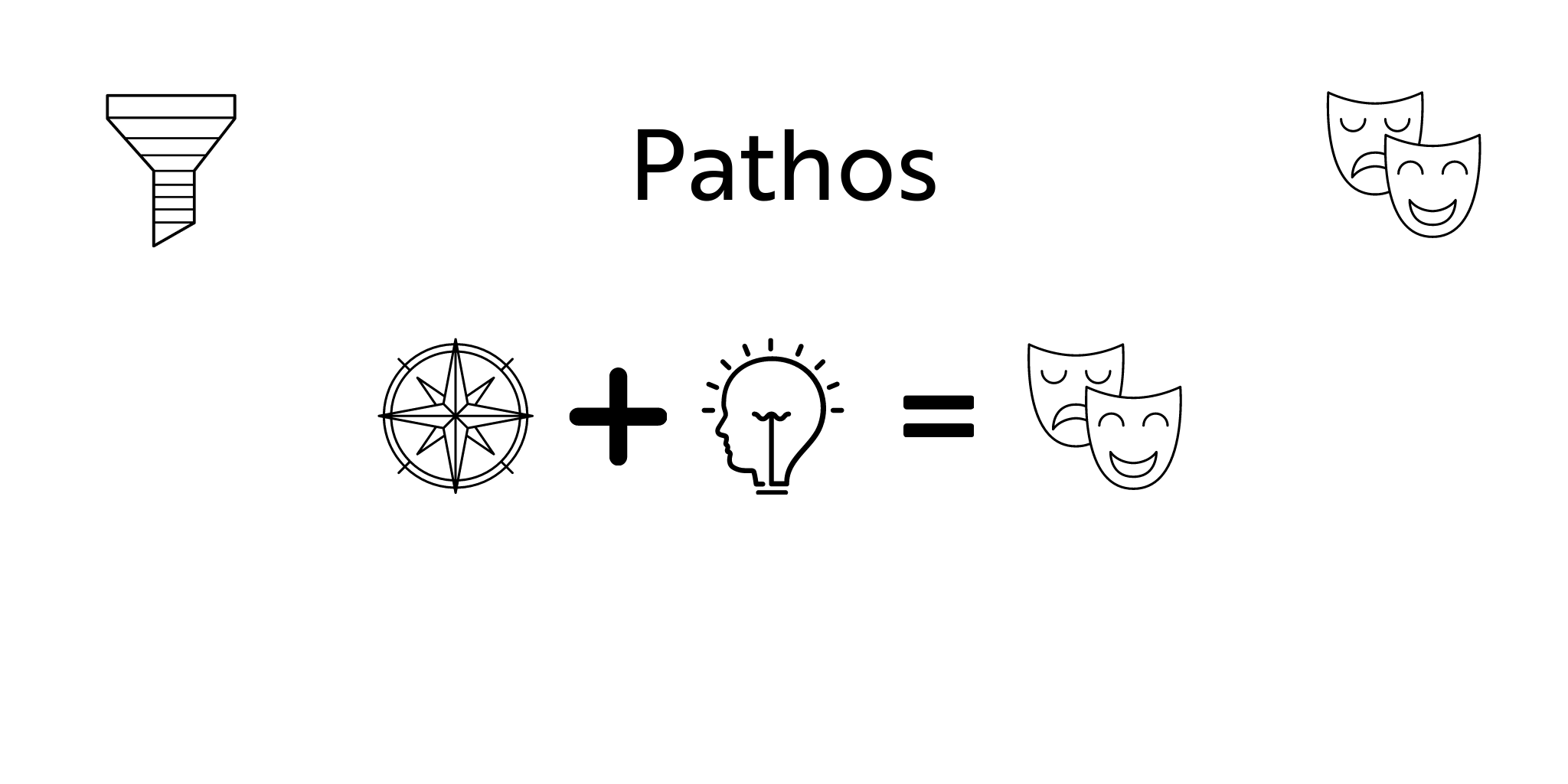Hooking Prospects with Pathos
The first part of the Story Funnel is how we hook prospects. If this were a play or a movie or a novel, this is Act 1 or in Story Grid nomenclature, The Beginning Hook. During this part, we’re going to use Pathos (emotions) as our main tool in hooking prospects into our story funnel.

The first part of the Story Funnel is how we hook prospects. If this were a play or a movie or a novel, this is Act 1. During this part, we’re going to use Pathos (emotions) as our main tool in hooking prospects into our story funnel.
The famous copywriter Joe Sugarman writes that people initially are hooked on emotion (pathos), and then end up purchasing on logic (logos). Emotions drive us all and we need to understand the emotional appeal of our brand for prospects first before they will become customers. Joe is not alone in that.
Robert Collier and Gary C. Halbert both understood the power of emotions and the importance of the Lede (the first sentence a prospect reads) to hook a prospect in. It’s that first emotional appeal that both worked tirelessly on in their copy because they both knew that a good, emotionally charged Lede would get the prospect to not only read it but read the next line as well. That’s the goal of all well-written stories -- to make it easy to read on and on and on.
Emotional Appeal or Pathos
This emotional appeal is not one of manipulation but rather of tuning into the wants and needs (more on that a little later on) of prospects so that you can cut through the noise and have them wanting to “tell me more.”
Part of building a great business and a great solution to a problem is first understanding what that problem is. Once you figure out that problem- you hit the user with stories of why their life is bad, bring them to remember the horrible pain this problem causes them. All that pain and suffering are built on emotions.
Filter Out Those That Don’t Want to Engage
The entire point of the hook is to both engage people and, more importantly, filter out those that don’t want your product or service. This is probably the most important part of the funnel to get right because it’s the noisiest part with the most variability. To get your hook right, we’ll have to figure out two things -- your Brand Core Value and your Brand Big Idea.
What About Personas and All That
We’re certainly not opposed to figuring out the types of people that will buy your product or service but that’s more for later. What we want to do is put down the bones of your brand’s story so that you can have a solid foundation for which to write your copy and figure out your personas.
In our experience, we have found that it’s first important to get your macro story straight before you dive deep into the minutia of Sally Salesperson, Art the Accountant, or Jim the gym rat. It’s also beyond the scope of what we want to accomplish with the story funnel.
Emotions, Emotions, and More Emotions
The hook part of the story funnel will dive into all sorts of different emotions. These emotions will be driven by the core value we’re going to pick for your brand next. As you will see, brands adhere to a core value (sometimes more than one) that doesn’t really change much. This core value will make up the full spectrum of emotions from the most negative to the most positive. Tap into those emotions and your prospect will give your brand a look.
Core Value + Big Idea = Core Emotion
Before we start building the Hook part of the funnel, we’ll have to get through the noise. One thing to note is that the Core Value and the Big Idea feed on each other so we’ll be going back and forth between them as we hone in on all aspects of the story funnel. It’s this back and forth that will give you a sense of what your brand should focus on.
Together, the core value and the big idea will ground us in the core emotions that we want a prospect to feel our brand can deliver. It’s these emotions that prompt prospects to become customers but we’re getting ahead of ourselves.
Are you ready to get in touch with your feelings by figuring out your brands Core Value?

